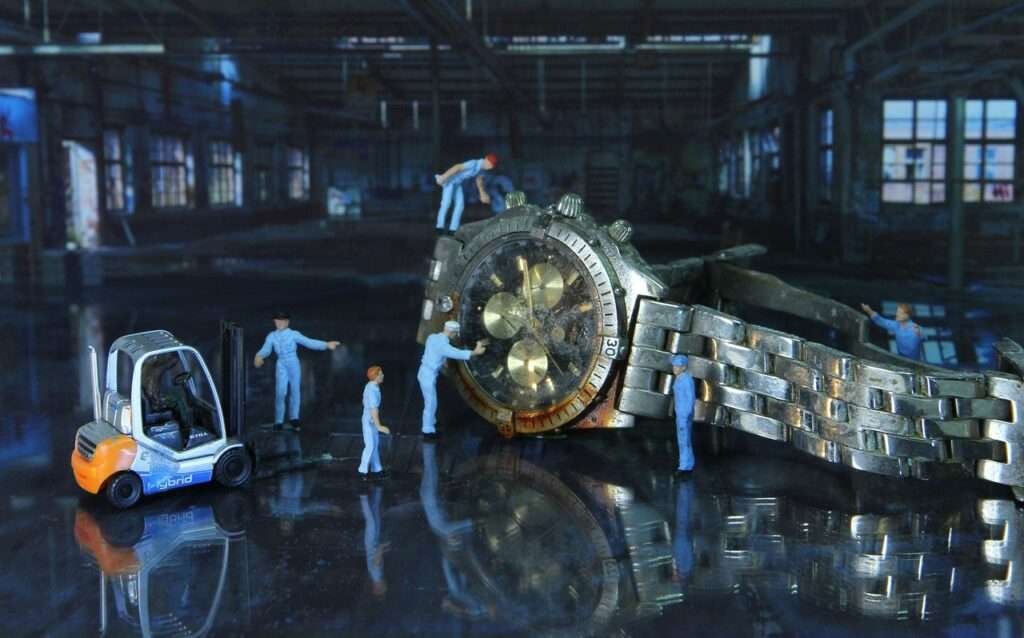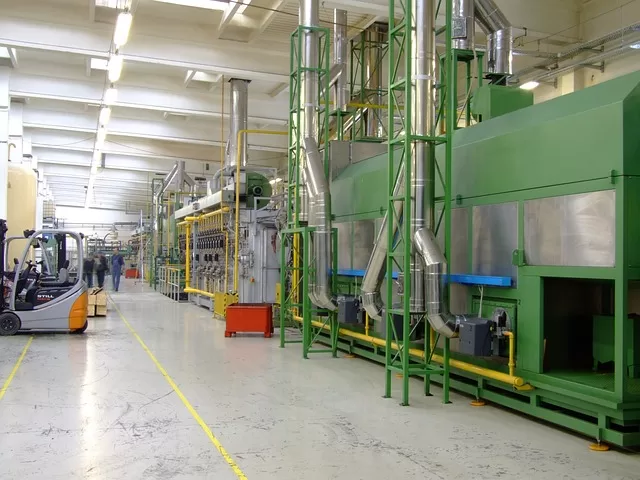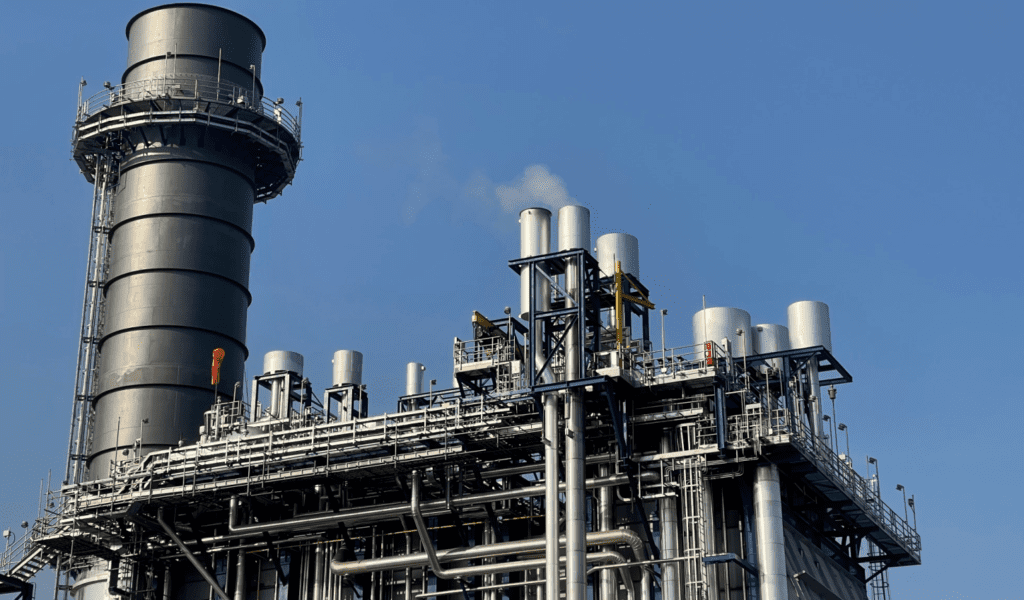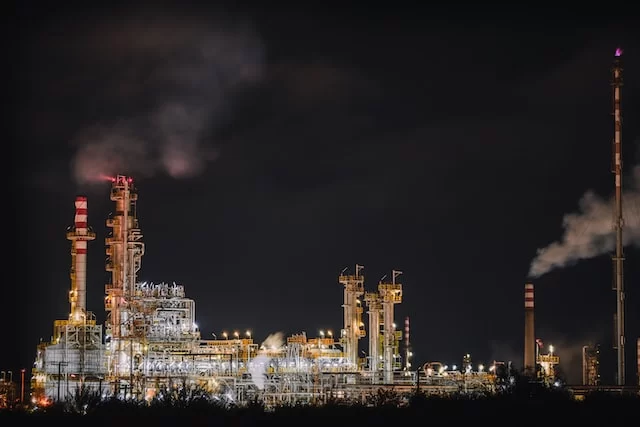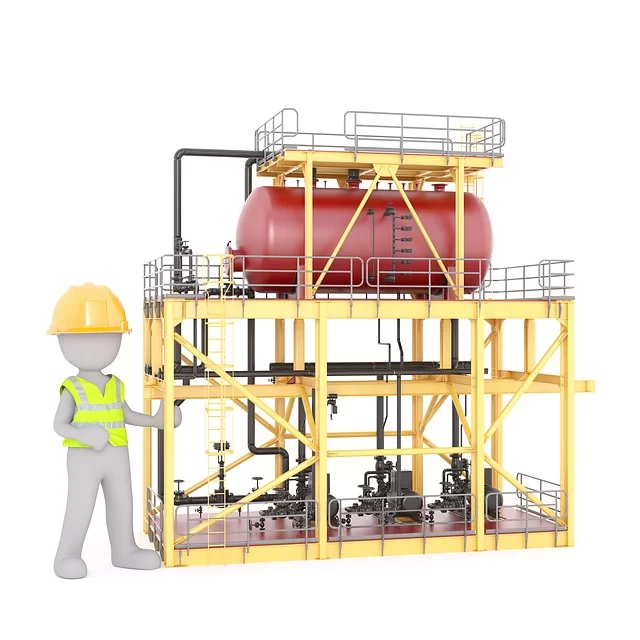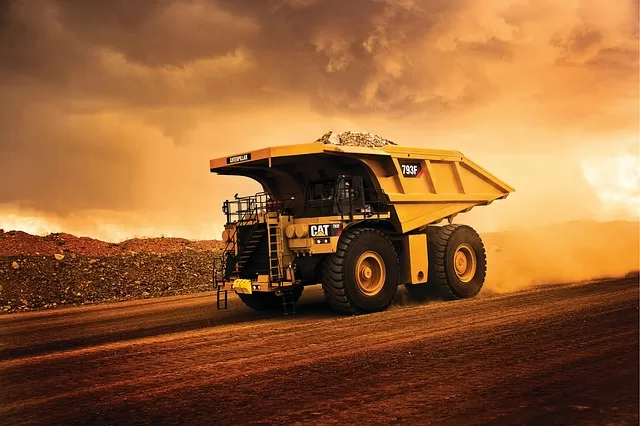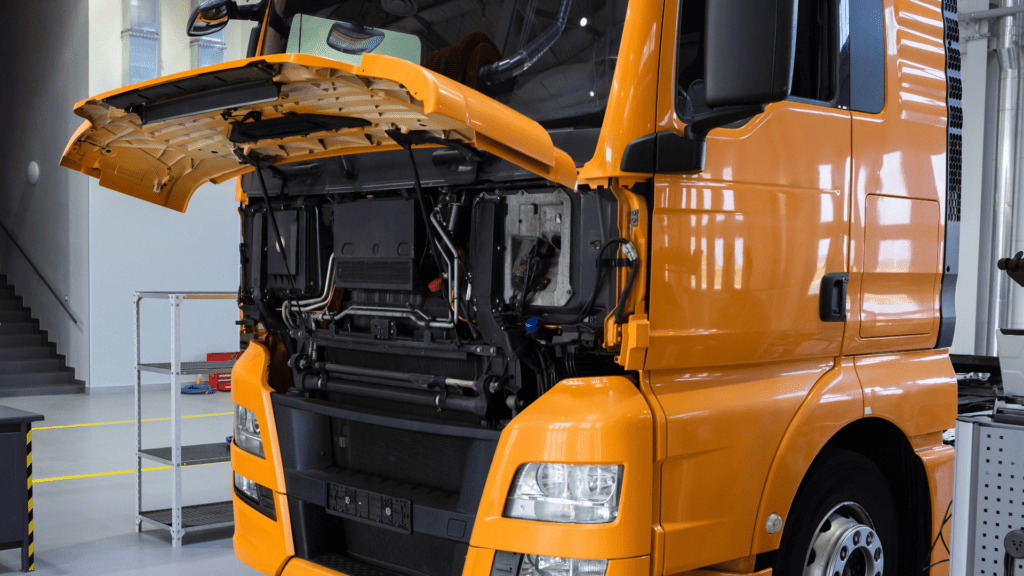The Importance of a Safety and Maintenance Interconnection.
The interconnection of safety and maintenance is critical in heavy industrial workplaces such as refineries, smelters, minerals processing plants, crushing plants, coal handling preparation plants, and power stations.
Because these environments are inherently hazardous, it is critical to prioritise worker safety as well as equipment integrity.
While it may be impossible to eliminate all risks, effective risk management strategies can significantly reduce potential dangers.
This document examines the significance of integrating safety and maintenance practices, emphasising their interdependence and the benefits of taking a proactive approach.
Organisations can foster safer working conditions and improve operational efficiency if they understand this connection.
Table Of Contents:
1.0 The Role of Maintenance in Enhancing Safety.
2.0 The Impact of Safety Culture on Maintenance.
3.0 Strategies for Optimising Safety and Maintenance.
4.0 CMMS Work Order Safety Checklists.
5.0 Benefits of Integrating Safety and Maintenance.
6.0 Challenges in Integrating Safety and Maintenance.
7.0 The Role of Technology in Enhancing Safety and Maintenance.
8.0 Future Trends in Safety and Maintenance.
9.0 Employee Involvement and Engagement.
10.0 Measuring Success: KPIs for Safety and Maintenance.
11.0 Lessons Learned from Safety Incidents.
12.0 Intertwining The Broken Window Theory.
13.0 Conclusion.
1.0 The Role of Maintenance in Enhancing Safety.
Maintenance plays a crucial role in improving safety within industrial workplaces. Well-maintained equipment is less likely to malfunction or fail, thereby reducing the risk of accidents and injuries.
Conducting routine inspections, predictive maintenance, servicing, and prompt corrective repairs allows potential hazards to be identified and addressed before they escalate into major issues.
Quality maintenance ensures that equipment operates at optimal efficiency, minimizing unexpected breakdowns or downtime.
This not only enhances productivity but also reduces the chances of accidents caused by equipment failure.
Additionally, maintenance activities often involve implementing safety measures, such as lockout/tagout procedures, to ensure the safety of maintenance personnel.
These protocols help prevent accidental startup or release of hazardous energy, protecting workers from potential harm.
2.0 The Impact of Safety Culture on Maintenance.
A strong safety culture within a workplace significantly influences maintenance practices.
When safety is prioritised and ingrained in an organization’s values, it fosters a culture of vigilance and responsibility among employees.
This cultural mindset encourages maintenance activities to be carried out diligently and proactively.
Employees who feel empowered to report potential safety hazards or equipment issues without fear of retribution contribute positively to the overall maintenance efforts.
Open communication channels allow problems to be addressed promptly, preventing them from escalating into more significant safety or maintenance challenges.
Moreover, a robust safety culture often leads to better resource allocation for maintenance activities. When management understands the value of safety and maintenance, they are more likely to invest in regular inspections, training programs and the necessary tools and equipment to ensure the ongoing upkeep of critical assets.
This proactive approach not only enhances the safety of the workplace but also ensures the reliability and longevity of equipment, contributing to the overall success of the organization.
3.0 Strategies for Optimising Safety and Maintenance.
To optimise safety and maintenance in industrial workplaces, organizations can implement several key strategies that enhance both safety and operational efficiency:
1. Establish a Comprehensive Maintenance Program: Develop a structured maintenance program that includes routine inspections, preventive maintenance tasks, and scheduled repairs. This program should be regularly reviewed and updated to reflect changes in equipment, processes, or safety regulations. Such a program ensures that maintenance activities are consistent and thorough, reducing the likelihood of equipment failure and associated safety risks.
2. Provide Adequate Training: Ensure that all employees, including maintenance personnel, receive comprehensive training on safety procedures, equipment operation, and maintenance best practices. Ongoing training and refresher courses are essential to keep employees up to date with the latest safety standards and maintenance techniques. Well-trained employees are better equipped to carry out maintenance tasks safely and effectively.
3. Encourage Reporting and Feedback: Establish a reporting system that encourages employees to report safety concerns and equipment issues promptly. Create a culture where feedback is valued and acted upon, ensuring that potential hazards are addressed in a timely manner. This proactive approach helps prevent minor issues from escalating into major safety or maintenance challenges.
4. Foster Collaboration Between Safety and Maintenance Teams: Promote collaboration between safety and maintenance teams to leverage their expertise and insights. Regular meetings and joint initiatives can help identify areas for improvement, streamline processes, and enhance overall safety and maintenance practices. By working together, these teams can develop more effective strategies to manage risks and maintain equipment.
5. Emphasize Continuous Improvement: Encourage a culture of continuous improvement by regularly evaluating safety and maintenance processes. Implement feedback loops, conduct audits, and seek input from employees to identify areas where safety and maintenance practices can be further enhanced. Continuous improvement ensures that safety and maintenance strategies remain effective and relevant in a dynamic industrial environment.
4.0 CMMS Work Order Safety Checklists.
The inclusion of a risk assessment checklist in CMMS work orders is essential for managing maintenance tasks safely and efficiently.
These checklists ensure that tradespeople are aware of any potential hazards associated with their tasks, reducing the risk of accidents or injuries.
By including a risk assessment checklist as the final component of a CMMS work order, organisations can prioritise safety and improve the overall effectiveness of their maintenance operations.
A risk assessment checklist is a quick and easy way to ensure that all necessary safety precautions are taken before starting a task.
It ensures that tradespeople fully understand the work order, including the main tasks and steps involved, and are equipped with the right information, tools, and equipment. This preparation helps develop a clear plan to achieve the desired outcome safely.
Key checklist headings might include verifying the availability of necessary information and procedures, confirming the availability of required tools and equipment, understanding the job’s impact on people, processes, or systems, ensuring safe access to the job location, and identifying any risks from nearby operating equipment.
Additionally, the checklist should prompt consideration of alternative methods for completing the job, the availability of spare parts, weather conditions, slip, trip, or fall risks, and any specific safety precautions related to the work area, such as handling hydrocarbons or chemicals.
By systematically addressing each aspect of the checklist, tradespeople can approach maintenance tasks with heightened safety awareness, reducing the likelihood of accidents or injuries.
This proactive approach underscores the importance of safety in maintenance operations and highlights the value of incorporating risk assessment checklists into CMMS work orders.
5.0 Benefits of Integrating Safety and Maintenance.
Integrating safety and maintenance practices in industrial workplaces offers numerous benefits that enhance both operational efficiency and worker protection:
1. Reduced Downtime and Costs: By prioritising maintenance and safety, organizations can minimize unexpected equipment failures and associated downtime. This proactive approach reduces repair costs and production losses, leading to improved profitability.
2. Enhanced Worker Safety: A strong focus on safety and maintenance ensures that equipment operates reliably and safely, reducing the risk of accidents and injuries. This creates a safer work environment, boosting employee morale and productivity.
3. Regulatory Compliance: Adhering to safety and maintenance standards helps organizations comply with industry regulations and avoid potential fines or legal issues. Regular maintenance and safety checks ensure that equipment meets required safety standards.
4. Improved Equipment Longevity: Routine maintenance and safety inspections extend the lifespan of equipment by preventing wear and tear. This leads to better asset management and reduces the need for frequent replacements.
5. Increased Operational Efficiency: Well-maintained equipment operates more efficiently, leading to higher productivity and reduced energy consumption. This efficiency contributes to the overall success of the organization by optimising resource use.
By integrating safety and maintenance, organizations can achieve a harmonious balance that not only protects workers but also enhances operational performance and sustainability.
6.0 Challenges in Integrating Safety and Maintenance.
While integrating safety and maintenance offers numerous benefits, there are also challenges that organizations may face in achieving this integration effectively:
1. Resource Constraints: Limited resources, including budget and personnel, can hinder the implementation of comprehensive safety and maintenance programs. Organizations may struggle to allocate sufficient funds for training, equipment, and regular maintenance activities.
2. Resistance to Change: Employees and management may resist changes to established processes and practices. Overcoming this resistance requires effective communication and demonstrating the long-term benefits of integrating safety and maintenance.
3. Complexity of Operations: Industrial workplaces often involve complex operations with numerous interdependent systems. Ensuring that safety and maintenance practices are consistently applied across all areas can be challenging, requiring detailed planning and coordination.
4. Compliance with Regulations: Navigating the landscape of safety and maintenance regulations can be daunting. Organizations must stay informed about changing regulations and ensure that their practices meet or exceed these standards.
5. Communication Barriers: Effective communication is crucial for integrating safety and maintenance. Language barriers, hierarchical structures, and siloed departments can impede the flow of information, leading to gaps in safety and maintenance practices.
Addressing these challenges requires a strategic approach that includes stakeholder engagement, continuous training, and the use of technology to streamline processes and enhance communication.
By proactively addressing these obstacles, organizations can successfully integrate safety and maintenance, creating a safer and more efficient work environment.
7.0 The Role of Technology in Enhancing Safety and Maintenance.
Technology plays a pivotal role in improving the integration of safety and maintenance in industrial workplaces.
By leveraging advanced technologies, organizations can enhance their safety protocols and maintenance practices in several ways:
1. Predictive Maintenance: Utilize sensors and IoT devices to monitor equipment conditions in real-time. Predictive maintenance technologies can detect anomalies and predict potential failures, allowing for timely interventions before issues become critical. This approach minimizes unexpected downtime and enhances safety by preventing equipment malfunctions.
2. Digital Work Orders and Checklists: Implement digital CMMS platforms that streamline the creation and management of work orders and safety checklists. Digital systems ensure that all necessary information is readily accessible to maintenance personnel, improving accuracy and efficiency in executing tasks.
3. Data Analytics: Use data analytics to identify trends and patterns in maintenance and safety data. Analysing this data can reveal insights into recurring issues, enabling organizations to address root causes and improve overall safety and maintenance strategies.
4. Augmented Reality (AR) and Virtual Reality (VR): Employ AR and VR technologies for training and simulation purposes. These tools provide immersive experiences that enhance the understanding of safety procedures and maintenance tasks, reducing the risk of errors and accidents.
5. Remote Monitoring and Control: Implement remote monitoring systems that allow for the oversight of equipment and processes from a distance. This capability is particularly valuable in hazardous environments, where minimizing human presence can enhance safety.
By integrating these technologies, organizations can create a more responsive and efficient safety and maintenance framework, ultimately contributing to a safer and more productive workplace.
8.0 Future Trends in Safety and Maintenance.
The landscape of safety and maintenance in industrial workplaces is continually evolving, driven by technological advancements and changing industry demands.
Here are some key future trends that are expected to shape the integration of safety and maintenance:
1. Increased Use of Artificial Intelligence (AI): AI is becoming a critical tool in predictive maintenance, allowing for the analysis of vast amounts of data to predict equipment failures before they occur. This proactive approach enhances safety by reducing unexpected breakdowns and associated risks.
2. IoT and Real-Time Monitoring: The Internet of Things (IoT) enables real-time monitoring of equipment and environmental conditions. Sensors collect data on equipment performance and environmental factors, providing insights that help prevent accidents and optimize maintenance schedules.
3. Automation and Robotics: Automation and robotics are increasingly used to perform maintenance tasks in hazardous environments, reducing the need for human intervention and enhancing safety. Robots can handle tasks such as inspections, repairs, and cleaning, minimizing the risk to human workers.
4. Augmented Reality (AR) and Virtual Reality (VR) Training: AR and VR technologies are transforming safety and maintenance training by providing immersive, realistic simulations. These tools allow workers to practice procedures and respond to emergency scenarios in a controlled environment, improving preparedness and reducing errors.
5. Sustainability and Green Maintenance Practices: There is a growing emphasis on sustainability in maintenance practices. Organizations are adopting eco-friendly materials and processes, focusing on energy efficiency, and reducing waste to minimize their environmental impact.
6. Integration of Safety and Maintenance Data: The integration of safety and maintenance data into unified platforms allows for better decision-making. By analysing combined data sets, organizations can identify correlations between safety incidents and maintenance activities, leading to improved strategies.
7. Remote Maintenance and Support: With advancements in connectivity, remote maintenance and support are becoming more feasible. Experts can diagnose and troubleshoot issues from afar, reducing the need for on-site visits and enhancing safety by limiting exposure to hazardous environments.
These trends highlight the ongoing transformation of safety and maintenance practices, driven by technological innovation and a focus on sustainability.
Organizations that embrace these trends are likely to benefit from improved safety outcomes, increased efficiency, and enhanced operational resilience.
9.0 Employee Involvement and Engagement.
Employee involvement and engagement are critical components in the successful implementation of safety and maintenance practices in industrial workplaces.
Engaging employees in these processes not only improves safety outcomes, but also fosters a culture of responsibility and collaboration.
Here are some key strategies to promote employee involvement and engagement:
1. Empowerment and Ownership: Encourage employees to take ownership of safety and maintenance practices by involving them in decision-making processes. Empowering employees to contribute ideas and solutions fosters a sense of responsibility and commitment to maintaining a safe work environment.
2. Open Communication Channels: Establish open lines of communication where employees can freely report safety concerns, maintenance issues, and suggestions for improvement without fear of retribution. This transparency ensures that potential hazards are identified and addressed promptly.
3. Recognition and Incentives: Recognize and reward employees who actively participate in safety and maintenance initiatives. Incentives can motivate employees to engage more deeply with safety protocols and maintenance practices, reinforcing positive behaviors.
4. Collaborative Problem-Solving: Involve employees in collaborative problem-solving sessions to address safety and maintenance challenges. By leveraging the diverse perspectives and expertise of the workforce, organizations can develop more effective and innovative solutions.
5. Continuous Training and Development: Provide ongoing training and development opportunities to keep employees informed about the latest safety standards and maintenance techniques. Engaged employees are more likely to embrace new practices and technologies when they feel confident in their skills and knowledge.
By fostering a culture of involvement and engagement, organizations can enhance the integration of safety and maintenance practices, leading to a safer and more efficient working environment.
Employees who feel valued and included are more likely to contribute positively to the organization’s safety and maintenance goals.
10.0 Measuring Success: KPIs for Safety and Maintenance.
Measuring the success of safety and maintenance integration in industrial workplaces requires the use of key performance indicators (KPIs) that provide insights into the effectiveness of these practices.
Here are some essential KPIs to consider:
1. Incident Rate: Track the number of safety incidents, including near misses, accidents, and injuries. A decreasing trend in incident rates indicates improved safety practices and effective risk management.
2. Equipment Uptime: Measure the percentage of time equipment is operational and available for use. High equipment uptime reflects effective maintenance practices and reduces the likelihood of unexpected breakdowns.
3. Maintenance Backlog: Monitor the volume of outstanding maintenance tasks. A low maintenance backlog suggests that maintenance activities are being completed in a timely manner, preventing potential safety hazards.
4. Mean Time Between Failures (MTBF): Calculate the average time between equipment failures. An increasing MTBF indicates improved equipment reliability and effective preventive maintenance strategies.
5. Mean Time to Repair (MTTR): Measure the average time taken to repair equipment after a failure. A decreasing MTTR reflects efficient repair processes and quick restoration of equipment functionality.
6. Training Completion Rate: Track the percentage of employees who have completed required safety and maintenance training programs. High training completion rates ensure that employees are knowledgeable about safety protocols and maintenance procedures.
7. Compliance with Safety Audits: Evaluate the results of safety audits and inspections. High compliance rates indicate adherence to safety standards and effective implementation of safety measures.
8. Employee Engagement in Safety Programs: Assess employee participation in safety initiatives, such as reporting hazards or attending safety meetings. High engagement levels suggest a strong safety culture and proactive involvement in safety practices.
By regularly monitoring these KPIs, organizations can gain valuable insights into the effectiveness of their safety and maintenance integration efforts.
These metrics help identify areas for improvement and guide decision-making to enhance safety and operational efficiency.
11.0 Lessons Learned from Safety Incidents.
Learning from past safety incidents is crucial for improving safety and maintenance practices in industrial workplaces.
By analysing these incidents, organizations can identify root causes, implement corrective actions, and prevent future occurrences. Here are some key lessons learned from safety incidents:
1. Importance of Thorough Risk Assessments: Many safety incidents occur due to inadequate risk assessments. Ensuring comprehensive risk evaluations before commencing maintenance tasks can help identify potential hazards and implement necessary precautions.
2. Need for Regular Training and Refreshers: Incidents often highlight gaps in employee training. Regular training and refresher courses are essential to keep employees informed about safety protocols and procedures, reducing the likelihood of human error.
3. Effective Communication and Reporting: Poor communication and underreporting of hazards can lead to incidents. Establishing clear communication channels and encouraging prompt reporting of safety concerns can help address issues before they escalate.
4. Proper Use of Personal Protective Equipment (PPE): Incidents frequently involve improper use or lack of PPE. Ensuring that employees have access to the right PPE and are trained in its proper use is critical for preventing injuries.
5. Maintenance of Equipment and Safety Systems: Equipment failures often result from neglected maintenance. Regular inspections and maintenance of both equipment and safety systems are vital to ensure reliability and prevent accidents.
6. Learning from Near Misses: Near misses provide valuable insights into potential safety issues. Analysing near misses with the same rigor as actual incidents can help identify vulnerabilities and improve safety measures.
7. Continuous Improvement and Feedback Loops: Implementing a culture of continuous improvement, where feedback from incidents is used to refine safety and maintenance practices, helps organizations adapt and enhance their safety strategies.
By applying these lessons learned, organizations can strengthen their safety and maintenance integration, creating a safer and more resilient work environment.
12.0 Intertwining The Broken Window Theory.
The ‘Broken Window Theory,’ originally developed in the context of criminology, suggests that visible signs of disorder and neglect, such as broken windows, can lead to an increase in crime and antisocial behaviour.
This theory can be effectively applied to the realm of industrial safety and maintenance, emphasizing the importance of addressing minor issues promptly to prevent larger problems.
1. Addressing Small Issues to Prevent Larger Hazards: In industrial settings, neglecting minor maintenance issues or safety hazards can lead to significant safety incidents. For example, ignoring a small oil leak may result in a slippery surface, increasing the risk of slips and falls. By applying the ‘Broken Window Theory,’ organizations can focus on fixing small maintenance issues and safety hazards immediately, thereby preventing them from escalating into more serious problems.
2. Fostering a Culture of Vigilance and Responsibility: The theory underscores the importance of maintaining order and cleanliness, which can be translated into fostering a culture of vigilance and responsibility in industrial workplaces. Encouraging employees to report and address even minor safety concerns or maintenance needs promotes a proactive safety culture, where everyone is committed to maintaining a safe and efficient work environment.
3. Regular Inspections and Maintenance: Just as repairing broken windows can prevent further vandalism, regular inspections and maintenance can prevent equipment failures and safety incidents. By routinely checking equipment and facilities for signs of wear or damage, organizations can ensure that small issues are addressed before they lead to costly repairs or accidents.
4. Impact on Employee Morale and Productivity: A well-maintained and orderly workplace can positively impact employee morale and productivity. When employees see that their environment is cared for and that management is committed to safety and maintenance, they are more likely to take pride in their work and adhere to safety protocols.
By integrating the principles of the ‘Broken Window Theory’ into safety and maintenance practices, organizations can create a safer, more efficient and more productive workplace.
Addressing minor issues promptly not only prevents larger problems but also reinforces a culture of safety and responsibility.
13.0 Conclusion.
The integration of safety and maintenance practices in industrial workplaces is essential for creating a secure and efficient environment.
As demonstrated throughout this document, effective maintenance not only enhances equipment reliability but also plays a critical role in safeguarding workers from potential hazards.
By fostering a strong safety culture, organizations can empower employees to actively participate in safety initiatives, report concerns, and collaborate on solutions.
Implementing structured maintenance programs, utilizing technology such as CMMS, and incorporating risk assessment checklists are vital strategies for optimising safety and maintenance efforts.
These practices ensure that minor issues are addressed promptly, preventing them from escalating into significant safety incidents, in line with the principles of the ‘Broken Window Theory.’
Moreover, measuring success through key performance indicators (KPIs) allows organizations to evaluate the effectiveness of their safety and maintenance integration efforts, driving continuous improvement.
Learning from past safety incidents provides invaluable insights that can further refine practices and enhance overall workplace safety.
Prioritising the interconnection between safety and maintenance not only protects workers but also contributes to the longevity and reliability of equipment, ultimately supporting the overall success of the organization.
By committing to these principles, industrial workplaces can foster a culture of safety and efficiency, ensuring a sustainable and productive future.

